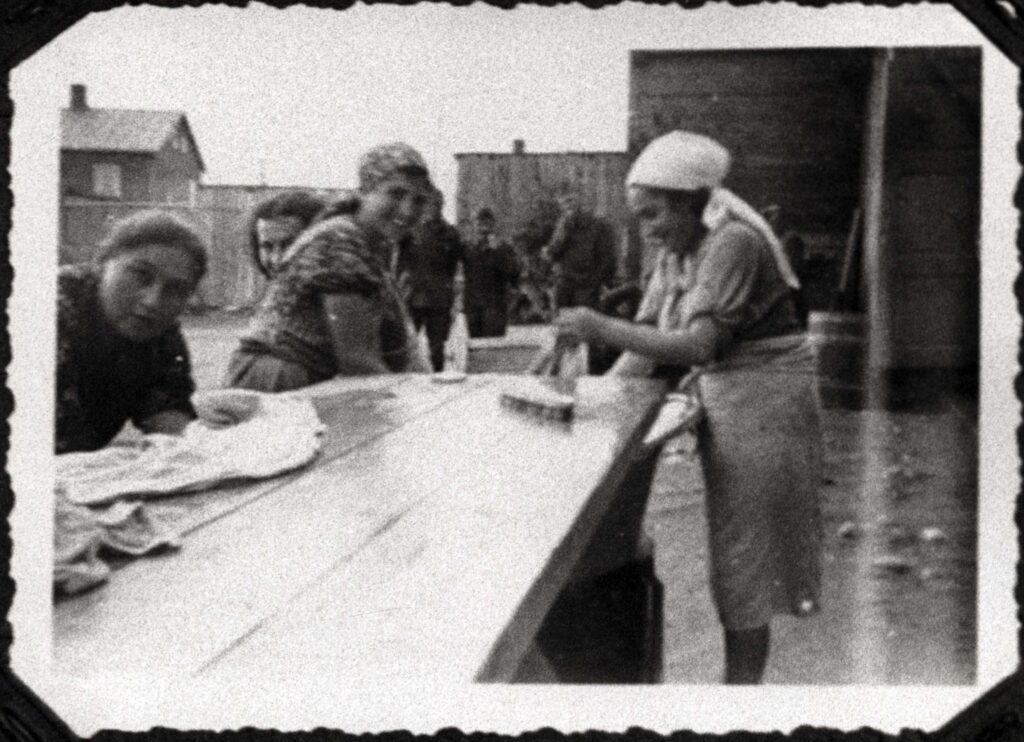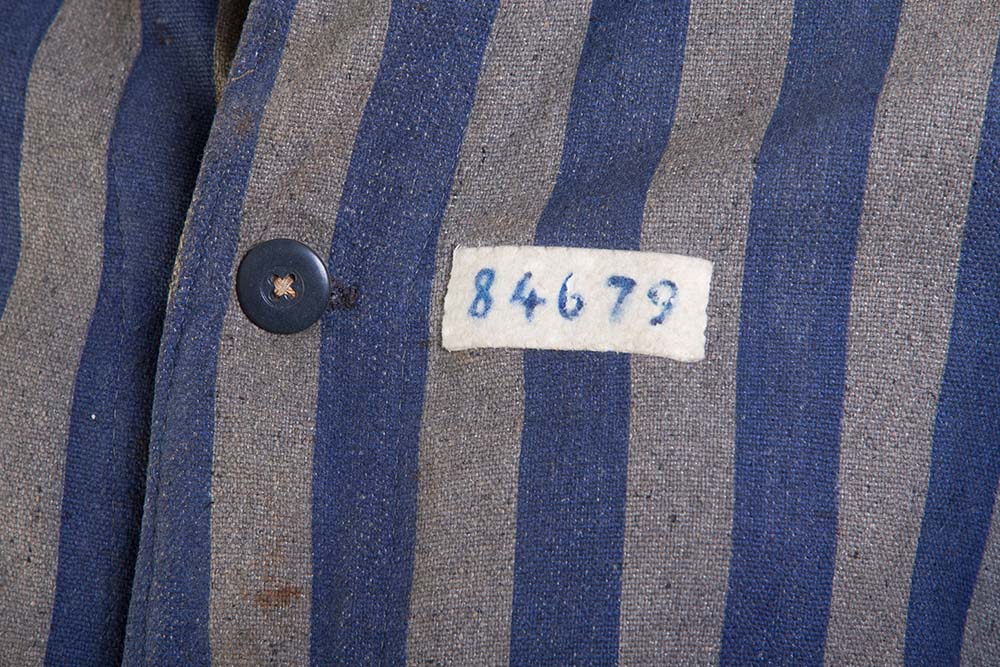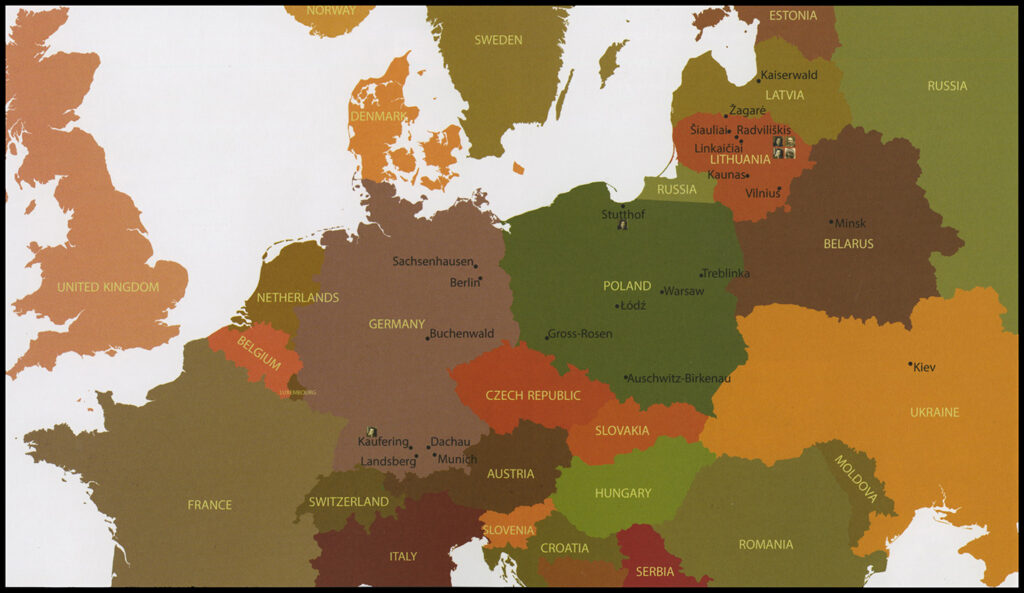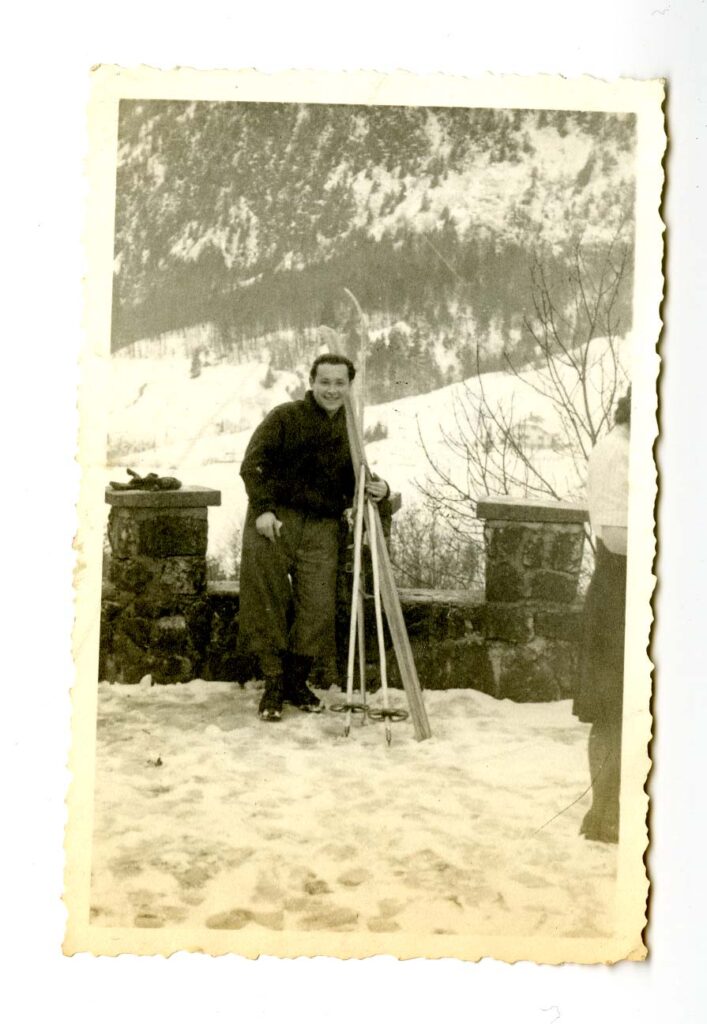Explore the Themes
“The Jacket from Dachau” exhibit contains hundreds of artifacts, which include photos, documents, videos, and interviews. Explore many of the artifacts below to learn more about their place in the story of one survivor’s search for justice, identity, and home. To review the complete library of artifacts click here.-
Trauma
Although a traumatic event may have concluded, that does not mean that those affected by it cease to feel its reverberations. Regardless of the length of time the actual trauma existed, a psychological toll can continue to manifest itself, both physically and mentally, in a survivor. Survivors of the Holocaust continued to suffer, both emotionally […]
-
Concentration: Camps & Ghettos
Following the German invasion of the Soviet Union in June 1941, Jews were forcibly moved to cordoned-off areas of cities referred to as ghettos. While in these spaces, resources were scarce and mobility was severely limited. These ghettos, which were established across Nazi-occupied Europe, were regularly patrolled by a combination of armed Nazi troops, local […]
-
Dehumanization & Categorization
Upon their arrival, concentration camp prisoners were often issued prison uniforms. These uniforms generally consisted of a striped jacket and pair of pants, with some variations across the camps. Prisoner identification numbers were sewed, or drawn, upon the left breast of the jacket, sometimes accompanied with a colored triangle. These color-coded triangles communicated different classifications […]
-
Changing Borders, Shifting Populations
The borders of many European countries changed in the lead up to, the occurrence of, and the in the years after World War II. As armies invaded and annexed countries, their citizenry dealt with not only a fluid understanding of citizenship, but also with the demands of the invading forces. In the case of those […]
-
The Aftermath: Rehab, Restructuring, & Recovery
After liberation, Ben reunited with his mother, Chiena, at the Landsberg displaced persons camp, located 30 miles from Dachau. The population at Landsberg was primarily Russian, Latvian, and Lithuanian survivors, and had a very active Jewish life and culture. Even though Landsberg, as well as other DP camps, was situated in a former military barracks, […]




